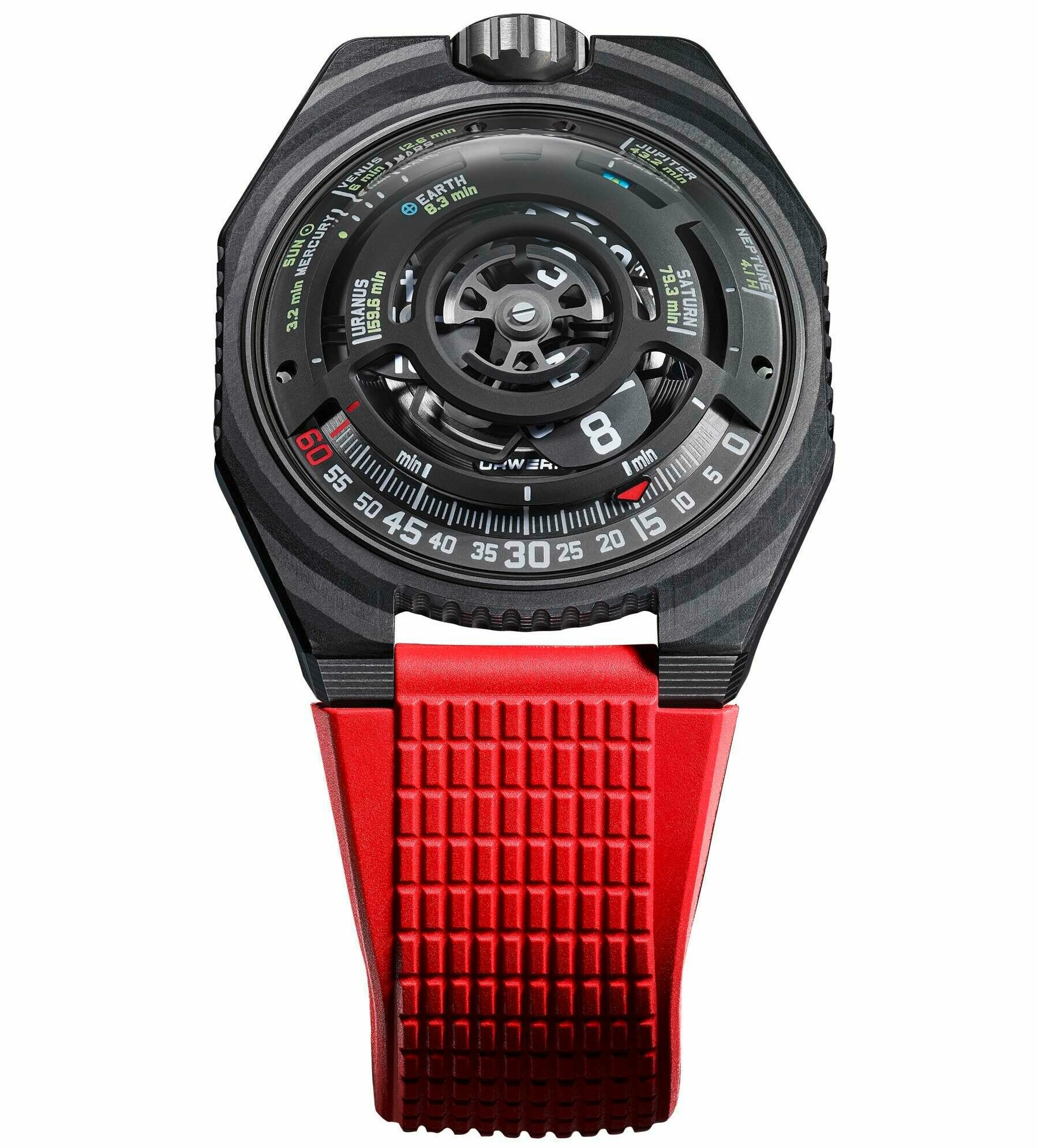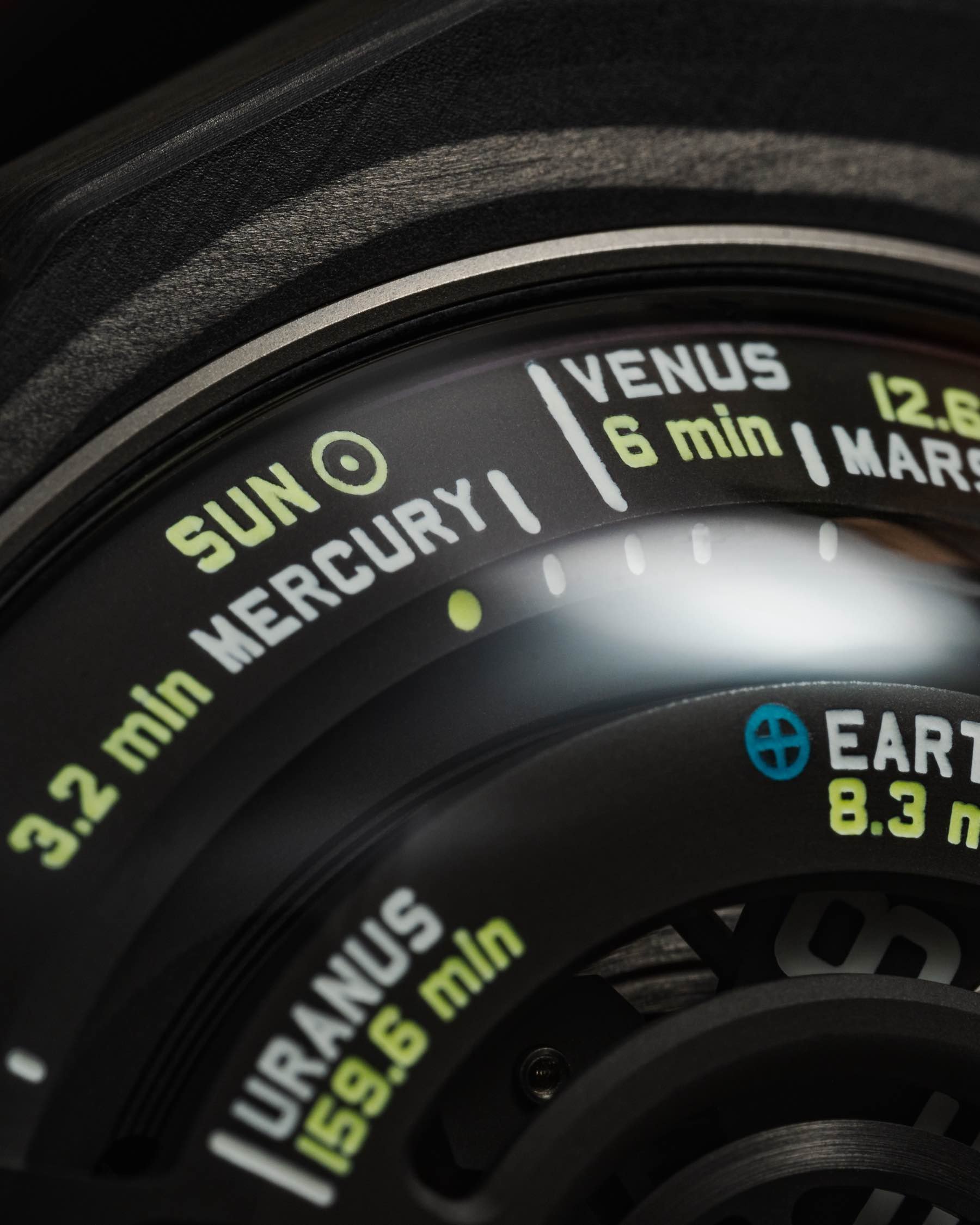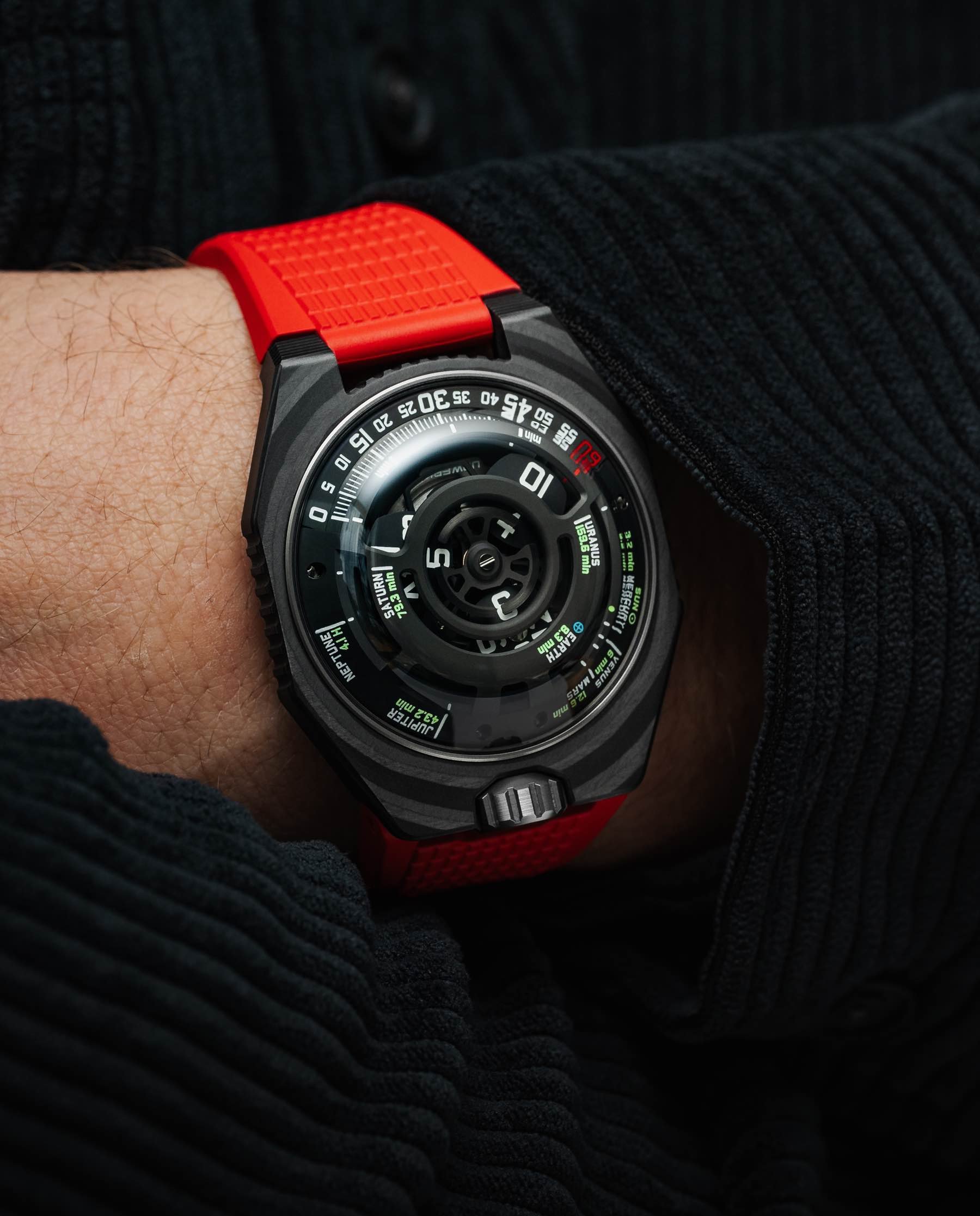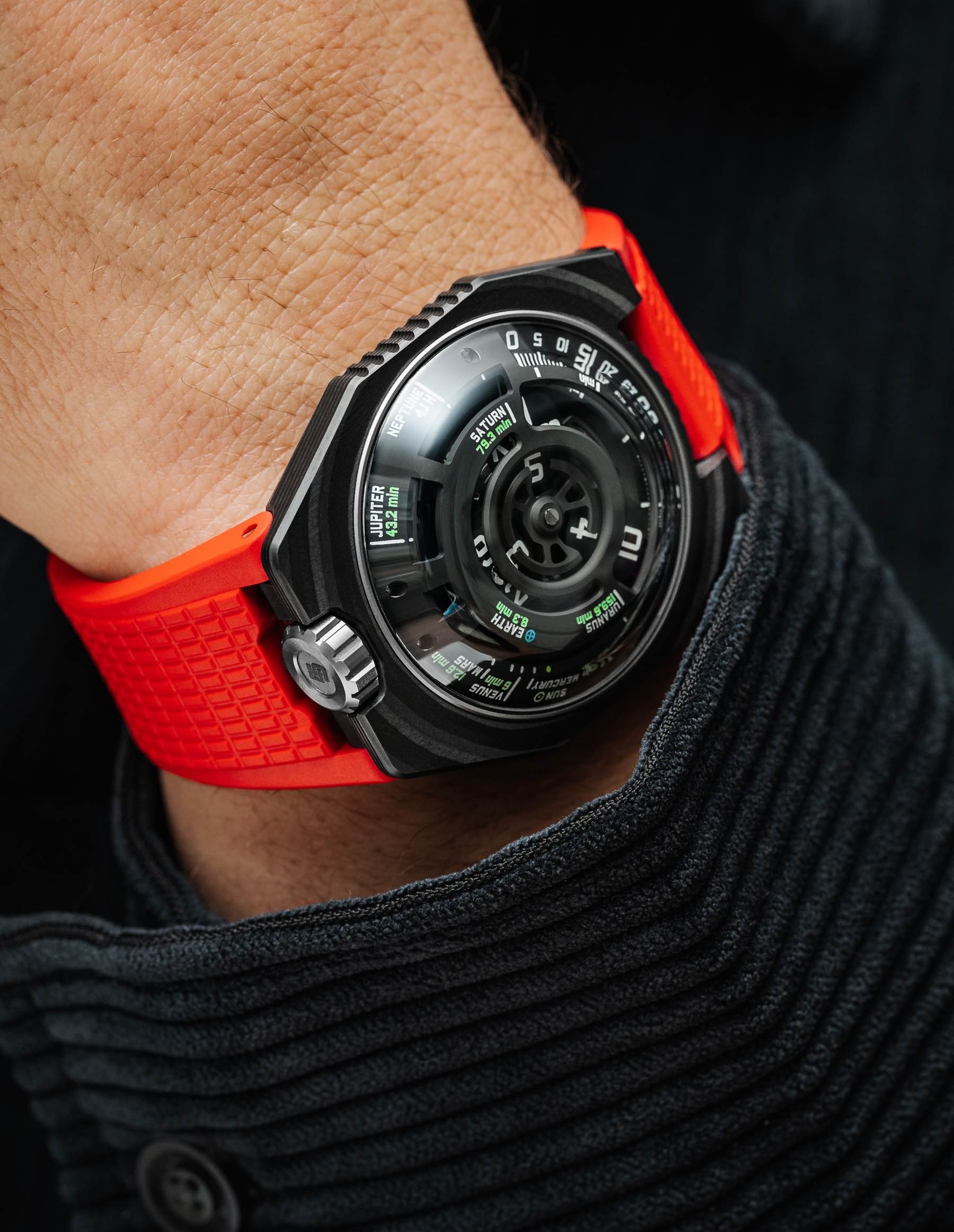Introducing: The Urwerk UR-100 LS “LightSpeed” With A Sunbeam-Travel Indicator
We know Urwerk as a laboratory for very high-end, off-the-beaten-path creations. The latest release from the Genevan brand does not disappoint in either respect. This is the Urwerk UR-100 LS with a rather exotic new complication for those who think beyond our little blue marble. This watch indicates the time required for a sunbeam to reach each of the eight planets in our solar system.
If that is not enough, the watch displays the time on Earth via satellite hours — you know, just to keep the space theme consistent. In that sense, this new complication suits the UR-100 platform to a tee. Let’s have a closer look!
Time via satellite
Of course, the first job of your Urwerk timepiece is to tell you the time on our home planet. This is done in the typical Urwerk UR-100 fashion. The UR-100 LS features the familiar case shape and signature time display of the 100-series models.
You can find the hours displayed on aluminum satellites set on beryllium-bronze Geneva crosses and an aluminum carousel. The current hour features an arrow that points at the current minute as the satellite moves across a third of a rotation in 60 gradations. As it reaches the 60-minute mark, the next hour appears at zero. Although it looks thoroughly modern, this mechanism takes inspiration from a 17th-century clock commissioned by Pope Alexander VII.
The eight planets displayed on the Urwerk UR-100 LS
The unique complication of this Urwerk UR-100 LS is based on the speed of light. As you may know, light travels at 299,792.458 kilometers (~186,000 miles) per second.
The top half of the dial of the UR-100 LS displays the eight planets in our solar system — Mercury, Venus, Earth, Mars, Jupiter, Saturn, Uranus, and Neptune. You may be aware that light from the Sun takes 8.3 minutes to reach our home planet. The Urwerk UR-100 LS, however, lets you grasp the sheer size of our solar system by indicating the same metric for each of the eight planets. That would be 3.2 minutes to Mercury, 6 minutes to Venus, 12.6 minutes to Mars, 43.2 minutes to Jupiter, 79.3 minutes to Saturn, 159.6 minutes to Uranus, and 4.1 hours to Neptune.
Bear with me: the light blue LightSpeed indicator links to the central carousel used for the time. This also rotates once every three hours. As you see, the minute track spreads 60 minutes over a third of the dial, so one rotation is three hours. So if you start from the Sun, you see the closest planets indicated in minutes. Additionally, the blue indicator then disappears after Saturn, reappearing one hour later at Uranus. As it then proceeds towards Neptune, it reaches its 4.1 hours in a little over one and a third of a rotation. However, you will have to keep track of the hours to know where the indicator is in its rotation since it doesn’t visually differentiate between minutes and hours. It is a bit of a cerebral complication, this one. However, it is a fun one that does invoke philosophical reflections.
Urwerk UR-100 LS specifications
As mentioned, the LightSpeed is, at heart, an Urwerk UR-100 with this added complication. Its case is made of 54 layers of carbon and measures 43mm across, 51.73mm long, and 14.55mm thick. The case back is shot-blasted and PVD-coated Grade 5 titanium. There is a screw-down crown at the typical 12 o’clock position and sapphire crystals on the top and bottom. Water resistance is rated at 50 meters.
The caliber inside is the UR12.02, which ticks away at 28,800vph frequency. Furthermore, the rotor’s shape is inspired by the Sun, and when fully wound, the UR12.02 has 48 hours of autonomy.
The Urwerk UR-100 LS comes on a textured red rubber strap with a folding clasp and has a price of CHF 65,000 (ex. VAT). Any buyers, however, will be wearing something incredibly rare. Urwerk only builds 150 watches per year across all of its models. It’s unlikely, then, that you will run into someone wearing the same watch any time soon.
What do you think of the new Urwerk UR-100 LS? Let us know in the comments below!






